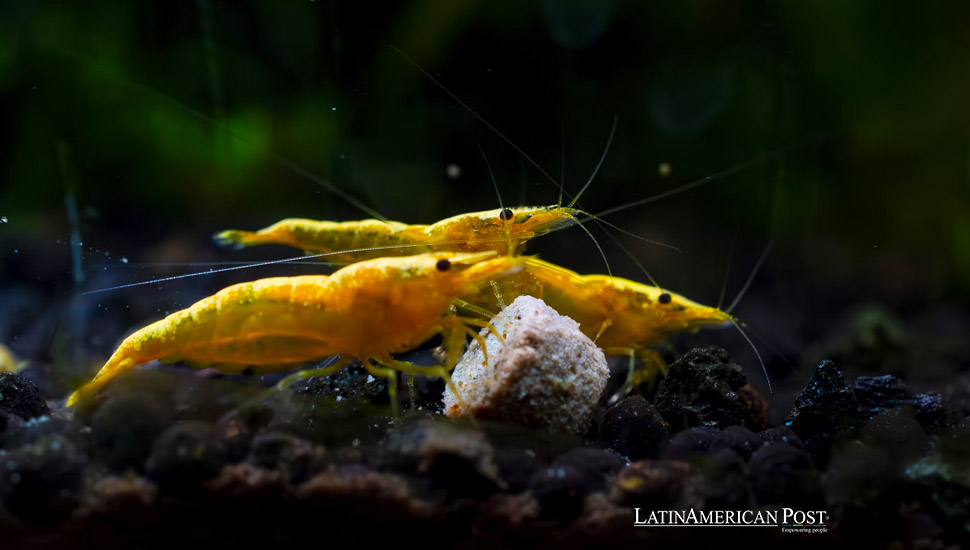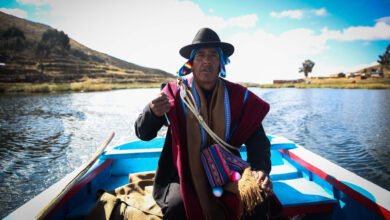Bolivia’s Inland Aquaculture Revolution: Shrimp Farming Without a Coast

In collaboration with the FAO, the Bolivian government is exploring shrimp farming in the highland salt flats and tropical regions. This innovative project aims to diversify aquaculture and enhance food security in a landlocked nation.
In a bold and innovative move, Bolivia is exploring the possibility of cultivating shrimp in its highland salt flats and tropical regions—an ambitious project spearheaded by the Bolivian government in partnership with the Food and Agriculture Organization (FAO). Despite being landlocked, Bolivia possesses unique geographical features and environmental conditions that could make shrimp farming a viable and valuable addition to its aquaculture sector.
Rodrigo Roubach, the FAO representative in Bolivia, highlighted the country’s vast potential in aquaculture due to its three major river basins. The project focuses on harnessing technologies currently unavailable in Bolivia, aiming to utilize saline waters in salt flats that are otherwise unsuitable for traditional agriculture. “We see a giant potential in Bolivia’s hydrographic basins,” Roubach stated, underscoring the untapped opportunities that these areas present for aquatic farming.
The idea is to adapt existing aquaculture technologies to Bolivia’s unique conditions, particularly in regions like the Altiplano and the tropical areas of Cochabamba. These regions offer the right combination of saline water and the presence of artemia—a microorganism essential for shrimp farming—making them prime candidates for this experimental project. The goal is to increase food production and provide sustainable livelihood opportunities for local communities.
Leveraging Resources for Sustainable Development
The project’s approach is deeply rooted in leveraging local resources and environmental conditions to foster sustainable development. In the highland salt flats, naturally occurring brine and artemia provide a ready-made environment for shrimp cultivation. Artemia, often referred to as brine shrimp, serves as a critical food source for farmed shrimp, making it a key component in the success of this project.
Marcelo Áñez, a national expert in aquaculture and regulations with the FAO in Bolivia, emphasized the importance of this local resource. “We began this study after discovering the presence of artemia in the salt flats, which is essential for shrimp farming,” Áñez explained. This discovery led to the initiation of feasibility studies and the involvement of international experts to evaluate the potential of shrimp farming in these unique environments.
The project also seeks to empower small-scale farmers by introducing them to aquaculture practices that can be quickly adopted and sustained. The focus is on creating low-scale production systems that can be managed by local families, thereby improving their quality of life, ensuring food security, and enabling them to sell any surplus produce. This grassroots approach aligns with the FAO’s mission to combat hunger and poverty while promoting equality and sustainable development.
Training and capacity-building are critical components of this initiative. Workshops and technical training sessions have been conducted in regions like Chimoré in the central Tropic of Cochabamba to educate local farmers and technical staff from government agencies. These sessions are designed to equip participants with the knowledge and skills needed to manage shrimp farming operations effectively, from maintaining optimal water conditions to understanding shrimp’s nutritional needs.
Environmental and Economic Challenges
Bolivia’s shrimp farming project is not just about tapping into new food sources; it’s also a response to pressing environmental and economic challenges. In regions like Oruro, the shrinking of major water bodies such as Lakes Poopó and Uru Uru has devastated local communities that depend on these lakes for fishing and agriculture. The decline in water levels and pollution have left many residents without their primary means of subsistence.
This situation underscores the urgent need for alternative livelihoods and sustainable food production methods. Shrimp farming offers a promising solution with its relatively low water usage compared to traditional agriculture. The project aims to create new economic opportunities for communities affected by environmental degradation by utilizing the saline waters of the highland salt flats. These efforts are part of a broader strategy to diversify Bolivia’s aquaculture sector, making it more resilient to climate change and other environmental pressures.
The project also has the potential to contribute to Bolivia’s food security by introducing a new source of high-quality protein. Shrimp is not only a valuable food product but also one that can be produced with relatively low inputs, making it an ideal candidate for small-scale farming in resource-limited settings. Additionally, the project aims to keep shrimp prices affordable, ensuring that the benefits of this new food source are accessible to all Bolivians.
Roubach emphasized that the project’s ultimate goal is to produce food with better protein quality for the population while maintaining fair prices. This dual focus on nutrition and affordability is crucial for ensuring that the project contributes to overall food security in Bolivia, particularly in regions where access to diverse and nutritious food sources is limited.
From Research to Implementation
Currently, the shrimp farming project in Bolivia is in the research phase, with studies focused on understanding the salinity levels, water conditions, and availability of live food resources like artemia. This phase also includes ongoing technical training and the development of pilot projects in selected regions. The goal is to have tangible results from experimental shrimp farming operations by 2025.
The FAO and the Bolivian Ministry of Rural Development and Lands are working closely to identify the most suitable locations for these pilot projects. Demonstrative units will be established to test different farming techniques and assess their viability in the Bolivian context. These units will serve as training grounds for local farmers and as models for scaling up production in the future.
Áñez expressed optimism about the project’s prospects, noting that Bolivia’s aquaculture sector is in dire need of diversification. “The perspective is very optimistic because the national aquaculture sector needs to diversify, and this project offers new techniques and market segments that can help achieve that,” he said. The project not only aims to introduce new farming practices but also to explore untapped markets for Bolivian shrimp, both domestically and potentially for export.
However, the road to successful implementation is not without its challenges. The project must overcome technical hurdles related to the adaptation of shrimp farming technologies to Bolivia’s unique environmental conditions. Additionally, ensuring community buy-in and participation will be critical to the project’s long-term success. The involvement of local populations in every stage of the project, from research to implementation, will be key to creating sustainable and inclusive aquaculture practices.
A Vision for Bolivia’s Aquaculture Future
As Bolivia looks to the future, the shrimp farming project represents a significant step toward diversifying its aquaculture sector and enhancing food security. The project’s focus on utilizing local resources, empowering small-scale farmers, and addressing environmental challenges aligns with broader national and global goals of sustainable development.
If successful, this project could serve as a model for other landlocked countries facing similar challenges. By demonstrating that aquaculture can thrive even in non-traditional settings, Bolivia could pave the way for new approaches to food production that are both innovative and sustainable. The lessons learned from this project could also inform future efforts to develop aquaculture in other parts of the world, particularly in regions where traditional agricultural practices are no longer viable due to environmental changes.
The collaboration between the Bolivian government and the FAO highlights the importance of international partnerships in addressing complex challenges like food security and environmental sustainability. By combining local knowledge with global expertise, this project has the potential to make a lasting impact on the lives of Bolivians and contribute to the broader goals of sustainable development.
Also read: Bolivia’s Strategic Move: Transporting Argentine Gas to Brazil Efficiently
As the project progresses from research to implementation, all eyes will be on Bolivia to see if this ambitious initiative can transform the country’s aquaculture sector and provide a new source of livelihood for its people. With the right combination of technology, training, and community involvement, Bolivia’s shrimp farming project could indeed become a beacon of innovation in the world of aquaculture.





